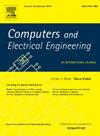Evaluation of hardware and software implementations for NIST finalist and fourth-round post-quantum cryptography KEMs
IF 4
3区 计算机科学
Q1 COMPUTER SCIENCE, HARDWARE & ARCHITECTURE
引用次数: 0
Abstract
Quantum computer attacks could easily jeopardize the total security of currently employed encryption systems. As a result, there is an ongoing collaborative effort to design post-quantum cryptography (PQC) algorithms, and to this end many works in the literature have been published. In this paper, five Key Encapsulation Mechanisms (KEM) for PQC that the National Institute of Standards and Technology (NIST) considered as one finalist and 4, fourth round KEMs are reviewed and compared, as well as their software and hardware implementations. Because of the high computational complexity of PQC algorithms, real-time implementation necessitates a large amount of hardware resources, particularly the number of multipliers. Also, traditional performance aspects of each algorithm that are implemented in hardware are compared, such as area, delay, and power, particularly, the memory requirements, resource usage, Lookup tables (LUTs), registers, Flip-flops, maximum operating frequency, number of cycles for encapsulation and decapsulation etc., to quantify and highlight the features of each algorithm. This survey discusses a variety of PQC algorithms that can be used to meet a variety of application needs, including accuracy, hardware resource usage, and throughput. It also informs researchers and engineers about the most recent advances in PQC research in order to identify research problems and improve designs for efficient PQC algorithms.
评估 NIST 入围和第四轮后量子加密 KEM 的硬件和软件实施情况
量子计算机攻击很容易危及目前使用的加密系统的整体安全性。因此,人们一直在合作设计后量子加密(PQC)算法,为此发表了许多文献。本文对美国国家标准与技术研究院(NIST)认为入围的五种 PQC 密钥封装机制(KEM)和四种第四轮 KEM 进行了评述和比较,并介绍了它们的软件和硬件实现方法。由于 PQC 算法的计算复杂度很高,实时实现需要大量的硬件资源,特别是乘法器的数量。此外,还比较了硬件实现的每种算法的传统性能方面,如面积、延迟和功耗,特别是内存要求、资源使用、查找表(LUT)、寄存器、触发器、最大工作频率、封装和解封装的周期数等,以量化和突出每种算法的特点。本调查报告讨论了各种 PQC 算法,这些算法可用于满足各种应用需求,包括精度、硬件资源使用和吞吐量。它还向研究人员和工程师介绍了 PQC 研究的最新进展,以便找出研究问题,改进高效 PQC 算法的设计。
本文章由计算机程序翻译,如有差异,请以英文原文为准。
求助全文
约1分钟内获得全文
求助全文
来源期刊

Computers & Electrical Engineering
工程技术-工程:电子与电气
CiteScore
9.20
自引率
7.00%
发文量
661
审稿时长
47 days
期刊介绍:
The impact of computers has nowhere been more revolutionary than in electrical engineering. The design, analysis, and operation of electrical and electronic systems are now dominated by computers, a transformation that has been motivated by the natural ease of interface between computers and electrical systems, and the promise of spectacular improvements in speed and efficiency.
Published since 1973, Computers & Electrical Engineering provides rapid publication of topical research into the integration of computer technology and computational techniques with electrical and electronic systems. The journal publishes papers featuring novel implementations of computers and computational techniques in areas like signal and image processing, high-performance computing, parallel processing, and communications. Special attention will be paid to papers describing innovative architectures, algorithms, and software tools.
 求助内容:
求助内容: 应助结果提醒方式:
应助结果提醒方式:


